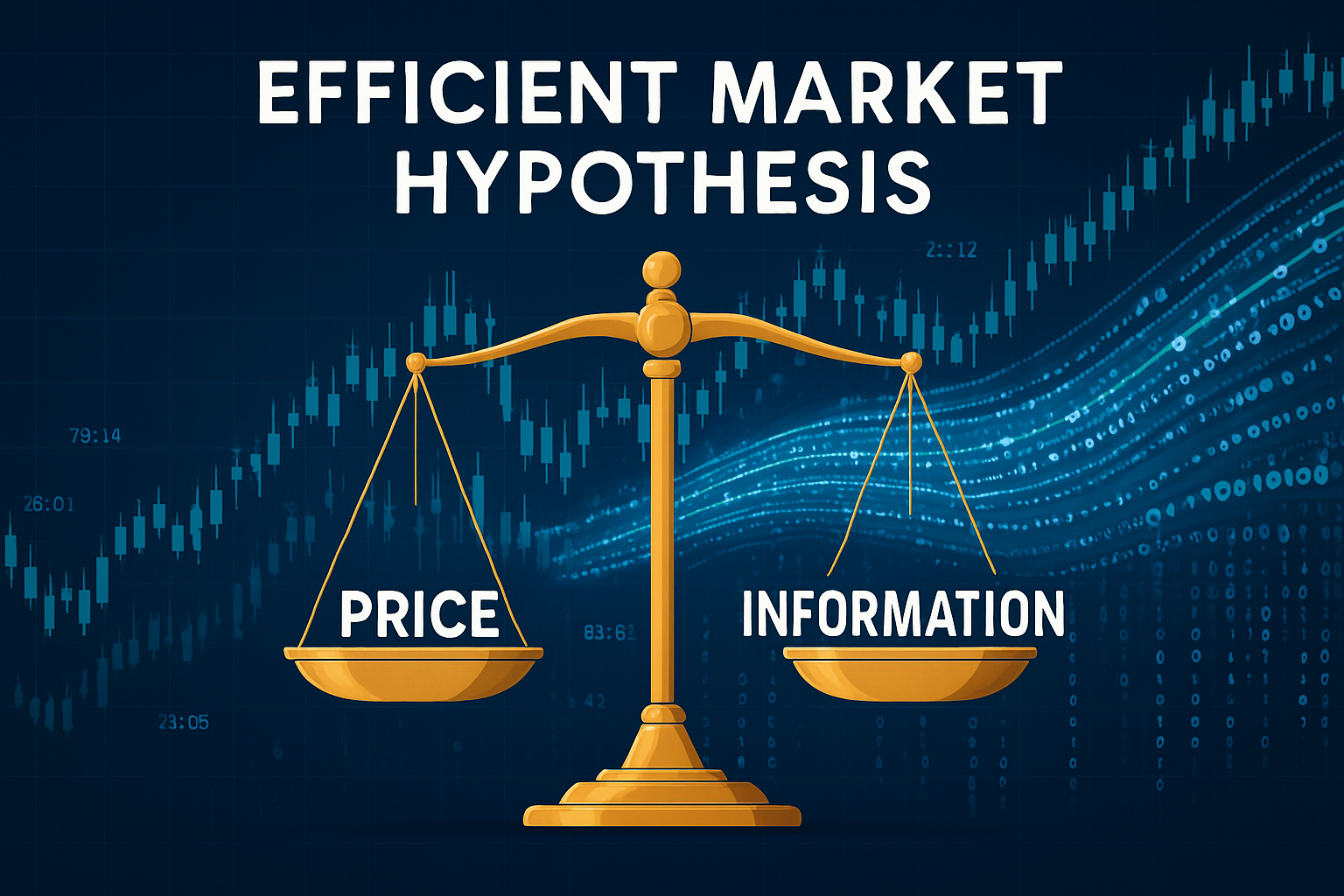The Efficient Market Hypothesis (EMH) is one of the most debated concepts in financial theory. Systematized by Professor Eugene Fama in the 1970s, it has had a profound influence on how we understand financial markets and investment strategies. For more on Eugene Fama, see Nobel Prize bio of Eugene Fama.
What Is the Efficient Market Hypothesis?
At its core, the EMH asserts that financial markets are “efficient,” meaning that security prices already reflect all available information. In other words, not only publicly available information but sometimes even non-public information is incorporated into prices. This makes it extremely difficult for any investor to consistently achieve returns above the market average based on superior information. Learn more about market efficiency at Investopedia – Efficient Market Hypothesis.
According to EMH, market participants react rapidly to new information, adjusting asset prices almost immediately. Therefore, consistently “beating the market”—achieving returns above the market average without taking on additional risk—is viewed as nearly impossible.
The fundamental assumptions of EMH are that investors act rationally and information circulates quickly and freely. When new information emerges, market participants immediately analyze it and incorporate it into trades, keeping asset prices at “fair” or “justified” levels. As a result, technical analysis using past price data or fundamental analysis using publicly available financial statements rarely enables investors to consistently outperform the market.
Three Forms of the EMH
1. Weak-Form Efficiency
Weak-form efficiency claims that asset prices already reflect all past trading information, including price and volume data. Consequently, technical analysis based on historical price trends or patterns is unlikely to predict future prices reliably, and momentum or chart-based strategies rarely yield above-average returns.
2. Semi-Strong Form Efficiency
Semi-strong efficiency asserts that all publicly available information—such as financial statements, news, and economic indicators—is already reflected in prices. Therefore, even fundamental analysis cannot consistently generate excess returns. When new information is released, its impact is immediately reflected in prices, leaving little opportunity for profit.
3. Strong-Form Efficiency
Strong-form efficiency suggests that all information, public and private (including insider information), is incorporated into asset prices. Even insiders cannot consistently earn above-average returns. In practice, insider trading exists, and strong-form EMH is widely questioned.
Most economists agree that strong-form EMH is unrealistic, but weak-form and semi-strong EMH have considerable empirical support.
- Learn more about Random Walk Theory.
Implications of EMH
If the EMH holds true, several key implications follow:
- Superiority of Passive Investment: If active managers cannot consistently beat the market, low-cost index funds and passive strategies become rational choices. Check out Vanguard – Index Funds
- Rapid Disappearance of Arbitrage Opportunities: Price discrepancies are quickly exploited by investors, so arbitrage opportunities do not last long.
- Random Walk Theory: Stock prices follow a “random walk,” meaning future price movements are independent of past movements.
- Limitations of Technical Analysis: Chart patterns or past price movements rarely enable sustained above-average returns.
Criticisms and Market Anomalies
Despite widespread acceptance, EMH faces challenges from various empirical anomalies:
- Value Effect: Undervalued “value” stocks often outperform overvalued “growth” stocks in the long term.
- Size Effect: Small-cap stocks tend to deliver higher returns than large-cap stocks.
- Momentum Effect: Stocks with recent upward trends often continue to rise.
- Seasonal Effects: Certain periods, like the January effect or Monday effect, show unusual market patterns.
- Excess Volatility: Extreme price swings are sometimes difficult to explain solely by rational responses to information.
The Rise of Behavioral Finance
Behavioral finance has emerged to explain these anomalies by examining the psychological and social factors affecting investors. Scholars argue that biases and irrational behavior can lead to market inefficiencies:
- Overconfidence: Investors overestimate their own abilities.
- Loss Aversion: People react more strongly to losses than equivalent gains.
- Herding: Investors tend to move collectively in similar directions.
- Framing Effect: Decisions are influenced by how information is presented.
Modern Perspectives: Relative Efficiency
Many economists now view market efficiency as relative rather than absolute. The Adaptive Market Hypothesis (AMH) by Andrew Lo, for example, attempts to integrate EMH with behavioral finance.
Market efficiency can vary depending on market conditions, asset types, and investment horizons. For example, large-cap markets may be more efficient than small-cap markets, due to abundant information and analyst coverage.
Lessons from the Efficient Market Hypothesis
The main takeaway of EMH is closely related to the Random Walk Theory: asset prices fluctuate randomly as new information emerges, making it inherently difficult to predict future movements based on past trends. This suggests that consistently earning excess returns depends more on chance than on superior information or analysis.
However, EMH is not without criticisms. Behavioral economics highlights that irrational human decisions, emotional reactions, and imperfect information processing can create inefficiencies. Research also shows that under certain conditions, markets may deviate from efficiency, allowing some investors to achieve consistent excess returns—for instance, during bubbles or sudden market shocks.
Technological advancements and real-time information flow have strengthened EMH’s plausibility, but high-frequency trading and algorithmic strategies also raise new questions about market behavior.
Conclusion
The Efficient Market Hypothesis posits that all available information is reflected in asset prices, making sustained above-average returns extremely difficult. For investors, this emphasizes the importance of long-term asset allocation, diversification, and risk management rather than chasing short-term excess profits. EMH provides critical insights into market functioning while reminding investors of the inherent limits of trying to “beat the market.”



